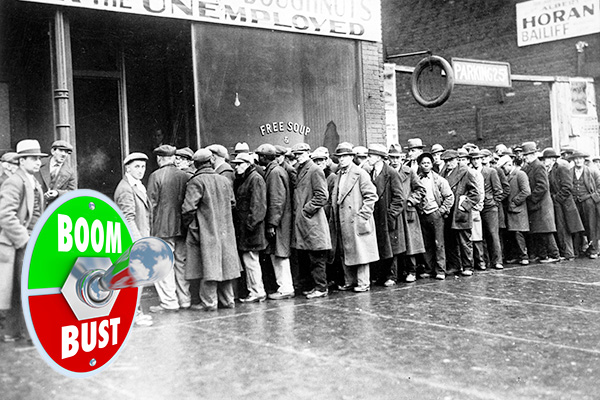Inflation continues to shape the American economy, with Middle America often shouldering the heaviest burden. One striking way to observe inflation’s impact is by examining the rising prices of essential vehicles—particularly no-frills, base-model pickup trucks like the RAM 1500 Tradesman, the Ford F-150 XL, and the Chevrolet Silverado 1500 Work Truck. These vehicles serve as workhorses for millions of Americans. By tracking their price increases from 2017 to 2024, we gain insight into the inflationary forces affecting Middle America, with a special focus on how pickup trucks, once a niche market, have now overtaken cars in popularity.
The Trucks: A Brief Overview
The models selected for this analysis are the base trims, stripped of luxury features and designed for durability and utility. These trucks are essential tools for many workers, making them an ideal barometer for how inflation impacts everyday purchases in Middle America.
- RAM 1500 Tradesman: A rugged, functional pickup truck designed for contractors, farmers, and laborers, emphasizing utility over comfort.
- Ford F-150 XL: The most basic, affordable version of the F-150, America’s best-selling vehicle, aimed at those who need a durable, reliable truck without extras.
- Chevrolet Silverado 1500 Work Truck: A straightforward, dependable truck built for tough work, catering to fleet buyers and individuals who value reliability over frills.
Where Did We Get Our Pricing Data
One of the most trusted publications for automobile reviews and the latest pricing information about vehicles is Car and Driver Magazine. All prices for all vehicles were taken from Car and Driver reviews year by year.
2017-2020: Pickup Work Truck Prices. The Trump Years
During the Trump administration (2017-2020), pickup truck prices saw steady increases, influenced by tariffs on parts and higher production costs. Based on data from Car and Driver reviews, here’s a snapshot of the price trends for base model trucks during these years:
Ford F-150 XL
- 2017 Price: $28,405
- 2020 Price: $30,440
- Price Increase: $2,035 ( 7% total increase)
RAM 1500 Tradesman
- 2017 Price: $27,890
- 2020 Price: $29,895
- Price Increase: $2,005 (7% total increase)
Chevrolet Silverado 1500 Work Truck
- 2017 Price: $29,080
- 2020 Price: $28,095
- Price Increase: $3,645 (3% total decrease)
The Shift in Buying Habits: 2020 and Beyond
An important development in the pickup truck market occurred in 2020, when, for the first time in U.S. history, Americans bought more pickup trucks than cars. This significant milestone, reported by Car and Driver, highlighted a shift in consumer behavior, particularly in Middle America, where the utility, durability, and functionality of trucks outweighed the appeal of smaller cars and sedans. Factors contributing to this shift included:
- Increased Utility: Pickup trucks became more versatile, serving not only as work vehicles but also as family transport and leisure vehicles.
- Affordability of Cars Decreasing: With the price of cars rising relative to their size and utility, consumers saw greater value in buying pickups.
- Preference for Larger Vehicles: Many American families in rural and suburban areas preferred larger vehicles, and trucks filled that gap as reliable, multifunctional vehicles.
This cultural and economic shift further intensified the inflation impact on pickup trucks, making it even more important to track their price changes in the years that followed.
2020-2024: Pickup Work Truck Prices. The Biden Years
Under the Biden administration, pickup truck prices continued to rise due to ongoing supply chain disruptions, material shortages, and inflationary pressures. Between 2020 and 2024, the price increases for base model trucks were significant:
Ford F-150 XL
- 2020 Price: $30,440
- 2024 Price: Approximately $38,960
- Price Increase: $8,520 (28% increase)
RAM 1500 Tradesman
- 2020 Price: $29,895
- 2024 Price: Approximately $41,415
- Price Increase: $11,520 (39% increase)
Chevrolet Silverado 1500 Work Truck
- 2020 Price: $28,095
- 2024 Price: Approximately $37,500
- Price Increase: $9,350 (33% increase)
Understanding the Inflationary Impact
While price increases for the Trump years were modest for truck purchasers, the inflationary Biden years were anything but. The price hikes across these popular pickup models for the years 2020 to 2024 are stark. These increases reflect broader inflationary pressures, including rising material and production costs. However, the shift in consumer preferences—exemplified by the fact that more Americans bought trucks than cars for the first time ever in 2020—adds another layer to the story.
For Middle America, where these trucks are often indispensable tools for work and family life, these price increases represent a significant burden. Many workers depend on these vehicles for their livelihoods, meaning the rising cost of base-model trucks has real economic consequences for American households.
Results
The rising prices of the RAM 1500 Tradesman, Ford F-150 XL, and Chevrolet Silverado 1500 Work Truck tell a compelling story about inflation and Middle America. From 2017 to 2024, these trucks saw significant price increases, reflecting not only inflation but also a cultural shift as more Americans turned to pickup trucks over cars. As wages struggle to keep pace with inflation, the rising cost of these essential vehicles is becoming a significant concern for workers who rely on them.
In 2020, when pickup truck sales overtook car sales for the first time, it underscored how these vehicles have become more than just a symbol of American strength—they have become central to the economic lives of millions of workers. But beyond the sticker price, another factor further impacts affordability: the cost of insuring these trucks. With the spectacular rise in vehicle prices, insurance premiums have also surged, driven by higher vehicle replacement costs, repair expenses, and the increasing complexity of even base-model trucks. As a result, insuring these vehicles has become considerably more expensive, placing an additional financial burden on middle- and lower-income Americans. For many, the combined cost of purchasing and insuring a new truck is increasingly out of reach, exacerbating affordability concerns and making it harder for workers to maintain access to the tools they need for their livelihoods.


